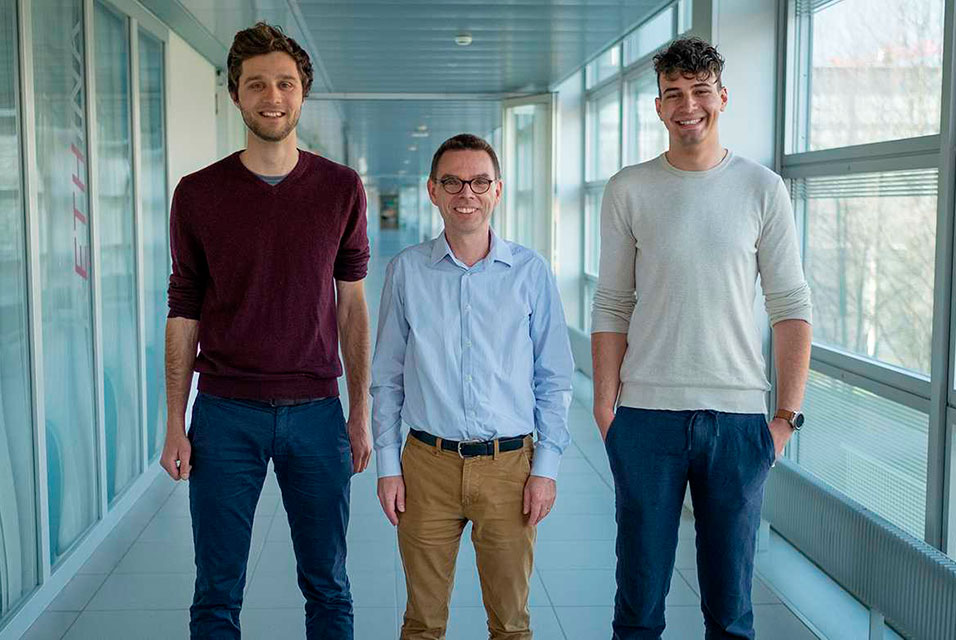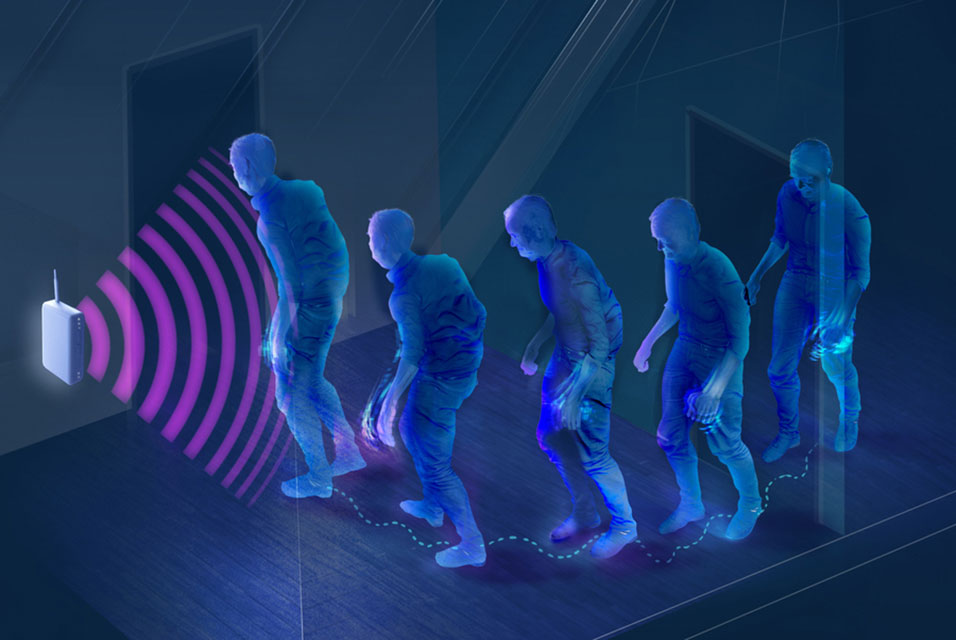ZURICH.- ETH Zurich biologist Daniel Richter has developed a method that enables proteins to be linked to a drug molecule or biomarker with a high level of stability. He plans to use this method in the future to identify tumour cells and open the door to more effective cancer drugs.
White surfaces, brightly coloured liquids in glass containers and appliances that wouldn’t look out of place in the average kitchen. Pipetting devices hang on the walls alongside safety instructions for their use. Inside a large transparent box, a shaker holding glass flasks filled with green liquid oscillates over and over to the same rhythm.
At first glance, the room where ETH doctoral student Daniel Richter carries out his research looks a lot like many other laboratories dotted around the globe. There’s nothing to suggest that this is where the 24-year-old from Liechtenstein is busy working on a biochemical process that ETH Zurich has named the most promising patent-pending invention of the past year.
Alongside Richter, postdoc Edgars Lakis and ETH Professor Jörn Piel from the Institute of Microbiology are also working on the method. With their invention, the three researchers hope not only to considerably expand the pharmaceutical industry’s toolbox, but also to assist with the breakthrough of more effective cancer therapies. But first they have several obstacles to overcome before their goals can be achieved.
Drugs that target cancer more effectively
Cancer continues to be the most common cause of premature death in many Western countries. Treatments often take the form of chemotherapy, which uses drugs to inhibit the growth of tumour cells.
Unfortunately, however, these substances not only have an effect on the tumour; they also attack healthy cells. Using the highest possible dosage to completely destroy the cancer cells is often not an option as it would also damage too many healthy cells.
This is where the new method developed by Richter, Lakis and Piel comes in: “We want to equip anti-cancer agents with specific antibodies that would enable them to attack only the tumour cells. This would allow drugs to be administered in higher doses while reducing side effects, which in the worst case can lead to the discontinuation of therapy,” Richter says.
Fundamental research for a new enzyme
The biggest challenge facing the production of these conjugate substances is that the drug molecule can break away in the wrong place before reaching the tumour. Researchers thus have to find the most stable linkage possible that releases the toxic agent only after entering the tumour cell. To date, none of the existing antibody therapies have managed to fully resolve this problem.
With this in mind, Richter and his colleagues turned their attention to an enzyme that is said to forge an exceptionally unique and stable link between the antibody and the drug molecule. To understand this mechanism, we have to go a step back: back to the fundamental research carried out by the Bacterial Natural Products group headed up by Jörn Piel.
Piel and his team investigate bacteria to find enzymes that trigger new chemical reactions. One day, Brandon Morinaka – a former postdoc in Piel’s group who now works as a professor at the National University of Singapore – made a find while examining cyanobacteria: he came across an enzyme which transforms proteins in a way that had never been seen before. A remarkable find for the ETH Zurich researcher, but one that had no specific use to begin with.
The missing piece of the puzzle
This all changed when Richter and Lakis put their heads together: at the time the discovery was made, Lakis was working as a doctoral student with Morinaka and dedicated part of his doctoral thesis to the new enzyme. Together with Richter and Piel, he realised that the new enzyme could be used to modify any protein, for example antibodies.
This intervention gives the proteins a distinct structure that makes them unique and enables them to attach to other specific molecules. “The enzyme is like a pair of scissors that can be used to trim a part of a protein or antibody into a unique piece of a jigsaw puzzle,” Richter says.
If there is a “counterpiece” that fits the modified antibody, it can be loaded with a toxic substance that is released solely in the cancer cell and nowhere else in the body. Richter set himself the task of creating this counterpiece as part of his Master’s thesis. Through a combination of chemical logic, trial and error in the lab and extreme diligence, he eventually found what he was looking for: the missing piece of the puzzle that fits the modified protein.
Fluorescent proteins
The researchers have demonstrated the method’s potential for pharmaceutical applications by first using the enzyme to modify a protein in a bacterium and then linking the counterpiece to a fluorescent molecule. When examining the bacterium under the fluorescence microscope, the modified proteins glow green on the screen.
Subsequent analysis shows that the dye attaches only to those proteins that react with the enzyme. What’s special about this method is that the linkage is extremely specific and stable, and can also be used in the future to locate cancer cells. “The advantage of our method is that it enables us to visualise tumour cells in the patient’s body without requiring a tissue sample,” Richter says.
Potential applications in the pharmaceutical industry
This clears the way to test the multi-stage process for the manufacture of antibody-drug conjugates and as part of clinical diagnostics. “Our method can theoretically be used to link any protein with an active agent or biomarker,” Richter says.
A future step will see Richter apply the process to proteins taken from human or animal cells. Should these tests prove successful, the method can then be applied to cancer-specific antibodies.
For the young researcher, one thing is certain: he is set to log even more hours in his laboratory on ETH Zurich’s Hönggerberg campus as he continues to adapt his method. But Richter is undeterred by the substantial time and effort that lies ahead: “I’m optimistic our method will pave the way for more affordable cancer therapies that are more specific and entail fewer side effects.”










